Kozmic Blues
Federation
By H. Beam Piper
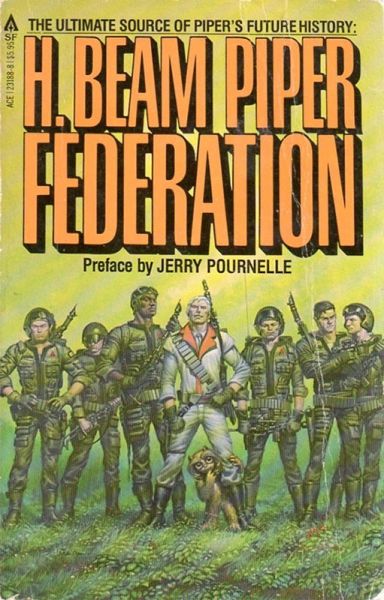
18 Sep, 2022
Because My Tears Are Delicious To You
1981’s Federation is a collection of novellas and novelettes set in H. Beam Piper’s star-spanning Federation[i].

18 Sep, 2022
Because My Tears Are Delicious To You
1981’s Federation is a collection of novellas and novelettes set in H. Beam Piper’s star-spanning Federation[i].
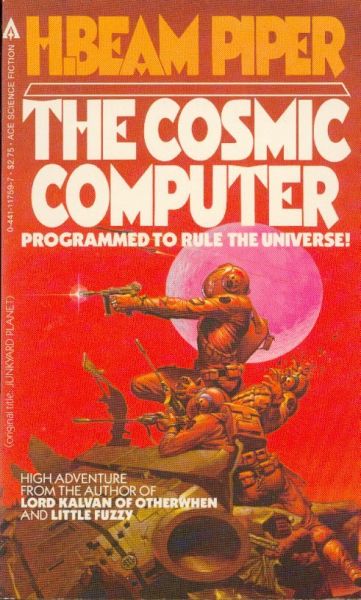
7 Apr, 2019
Because My Tears Are Delicious To You
H. Beam Piper’s 1963 The Cosmic Computer is a standalone science fiction novel. It’s set in Piper’s Terra-Human future history, in the last days of the Federation.
Conn Maxwell returns from Terra to his backwater homeworld, Poictesme, armed with hard-won knowledge. The family friends who pooled resources to pay for Conn’s education did so in the hope that while on Earth, Conn would uncover the secret location of Merlin, the fabled supercomputer that many believe allowed the Federation to triumph over the secessionist System States Alliance. With Merlin’s help, surely the investors could learn how to kickstart Poictesme’s moribund economy.
What Conn learned was that Merlin was not just legendary. It was a myth. There would be no all-powerful supercomputer to guide Poictesme to prosperity.
When Conn returns to his homeworld, he lies to his friends and backers. He claims to know how to find Merlin. This isn’t just an attempt to spare his friends or evade responsibility for the failure. He wants to use the belief in Merlin to inspire his world to take the steps that will rebuild its economy.
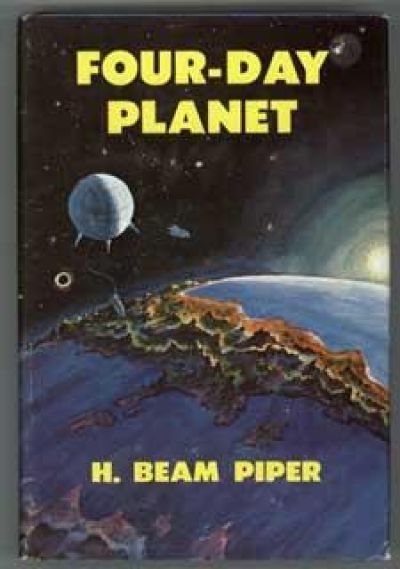
12 Aug, 2018
Because My Tears Are Delicious To You
1961’s Four-Day Planet is a standalone young-adult novel set in the Federation period of H. Beam Piper’s Terra-Human future history.
Teen journalist Walt has lived his whole life on Fenris. He’s one of the ten thousand people who call that odd world home. They are isolated and poor; they languish under a corrupt government. Life can only get worse … or so it seems.
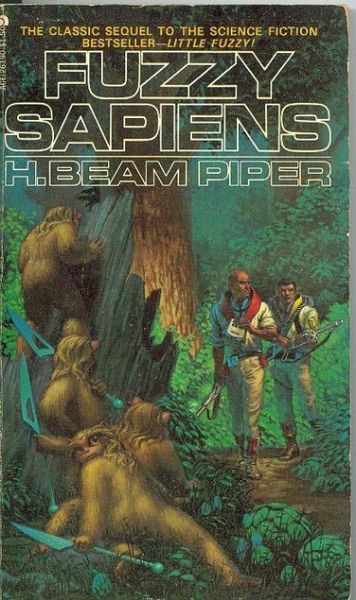
15 Oct, 2017
Because My Tears Are Delicious To You
1964’s Fuzzy Sapiens, first published under the title The Other Human Race, is the sequel1 to H. Beam Piper’s Little Fuzzy.
Previously: old Jack Holloway, Ben Rainsford, Ruth Otheris, and their allies triumphed over the forces of pure capitalist evil, as represented by Victor Grego and his Chartered Zarathustra Company. Zarathustra was reclassified from Class-III to Class-IV and its native Fuzzies legally accepted as people.
Now Jack and his friends get to grapple with the consequences of winning.
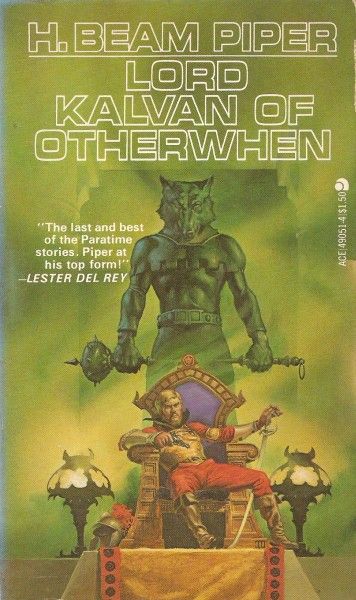
17 Jul, 2016
Because My Tears Are Delicious To You
0 comments
Before I delve into H. Beam Piper’s 1965 alternate history novel Lord Kalvan of Otherwhen, I would like to thank John F. Carr and his biography of Piper for providing a context for the novel. Context (for me at least) transformed what I once read as a somewhat problematic but engaging power fantasy into something much more tragic.
One moment, Pennsylvania cop Calvin Morrison was poised to arrest a fugitive. The next moment he was in a weird, high-tech vehicle, whose pilot seems very upset to see Calvin, judging by the pilot’s response: he tries to shoot Calvin with a ray gun. Moments after that unsettling confrontation, Calvin finds himself alone in a virgin-growth forest.
It does not take long for Calvin to suspect that he has moved in time rather than space: he recognizes the contours of the land as the familiar hills he knows from his own Pennsylvania. He at first believes that he might have been shifted to a time before the coming of the white men. Then he happens upon an isolated steading inhabited by whites; Calvin begins to suspect that he has been sent to a distant future in which humanity is still crawling out of some post-Atomigeddon dark age.
Wrong again.
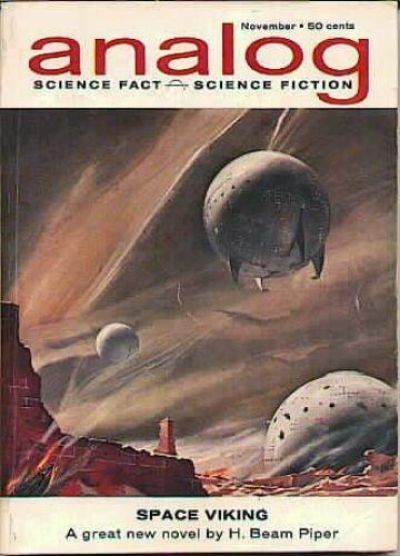
13 Aug, 2015
Military Speculative Fiction That Doesn't Suck
0 comments
I will probably review all of my H. Beam Piper novels (or at least the SF ones) eventually. I have a specific reason for reviewing 1962’s Space Viking this week. A reason I will not explain until Friday. Foreshadowing! The mark of quality literature!
Speaking of foreshadowing, when Lady Elaine warns her husband-to-be Lucas, Lord Trask, Baron of Traskon that
“It’s bad luck to be called by your married name before the wedding.”
Trask should have listened. For that matter, every aristocrat on the planet Gram should have noticed just how crazy Lord Andray Dunnan was, and what a bad idea it was to allow Dunnan to assemble his own private army. Elaine and Trask in particular have good reason to be worried: through no fault of her own, Elaine plays a central role in Dunnan’s rich fantasy life. But … Dunnan is the nephew of Duke Angus, who is poised to make himself king of all Gram. Dunnan is too well-connected to be shot out of hand, so everyone tacitly tolerates his obvious craziness.
Then everything goes pear-shaped. Dunnan’s men hijack the starship Enterprise; in retrospect, the purpose for which Dunnan recruited all those mercenaries. Dunnan tries to assassinate Elaine (for rejecting him) and Trask (for winning her) before fleeing in the Enterprise. Dunnan’s mistake is to kill Elaine, but only wound Trask. While the aristocracy of Gram may not be inclined to pursue their vendetta into space, nothing will stop Trask from chasing Dunnan to the ends of the galaxy.
Chasing is easy enough. Actually finding Dunnan, on the other hand.…
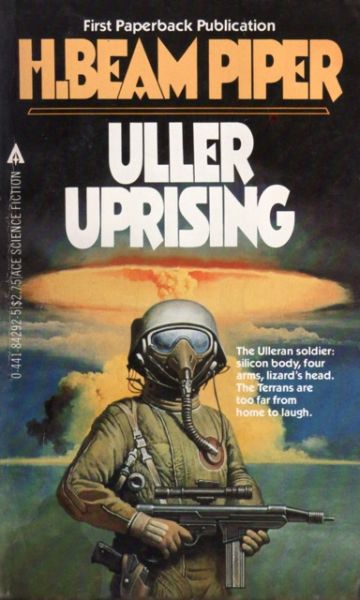
13 Jun, 2015
Special Requests
0 comments
1952’s Uller Uprising may be one of H. Beam Piper’s minor works but it’s not without its points of interest. It is a relic of a fascinating failed experiment in science fiction publishing; it is the first novel where he played with the basic ideas of his Terro-Human Future History; and it is almost certainly his most problematic work, even counting Space Viking.
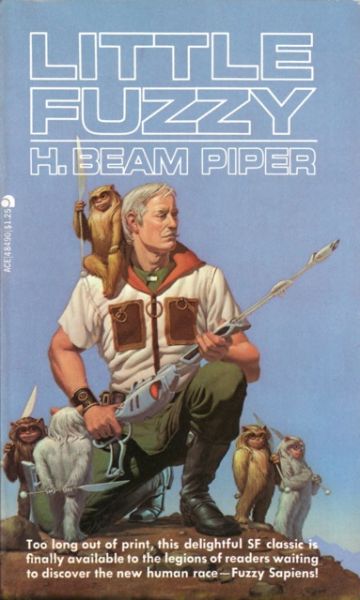
19 Apr, 2015
Because My Tears Are Delicious To You
0 comments
I had never heard of H. Beam Piper when I spotted the Michael Whelan cover on the 1976 reprint of Little Fuzzy. Of all Piper’s novels, this is probably the one that readers remember most fondly; it was certainly good enough to get me hooked on his fiction.